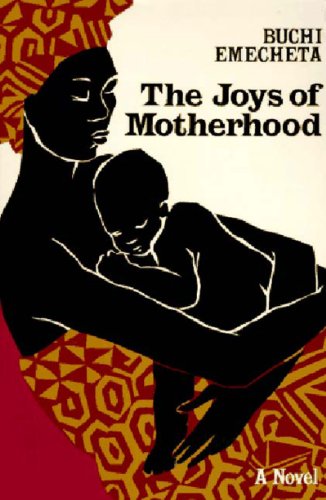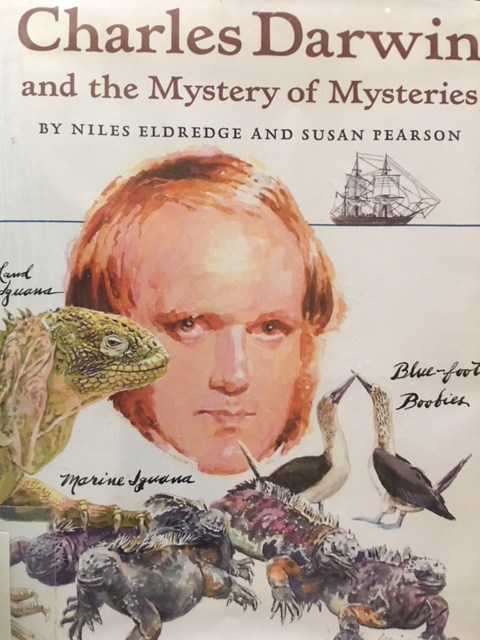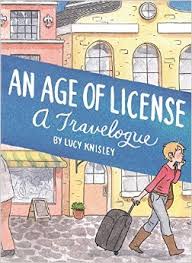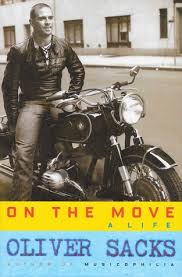
Source: amazon.com
I first noticed Karl Ove Knausgaard’s name on a bookshelf at Powell’s in Portland. I took several pictures of books that intrigued me, or that I thought my son might find interesting. Among those, is this picture of a young boy on the cover of My Struggle: Book 3.
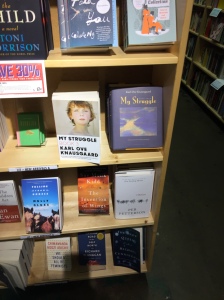
So I came home and read a little (much too little) about My Struggle, found that I needed help to pronounce ‘Knausgaard’, discovered that he was Norwegian, and thought that it would be interesting to read about the life struggles of a foreign dude. My local library helped me search and locate the book in its vast, state-wide network and transported it for me to my doorstep (or a mile from it). Whereupon I spent two weeks reading the book, sometimes struggling through Knausgaard’s struggles, and at other times engrossed in them.
My library put a sticker on the book’s spine that says ‘FIC KNAUSGAAR’. Without this sticker, I wouldn’t have thought of the book as anything other than Knausgaard’s memoirs, a six-volume autobiography. But one of the reviews on the very first page also tells me that the book is “a brilliant start to a giant autobiographical novel cycle”. I have difficulty understanding what an autobiographical novel means. I have some trouble as it is with works deemed non-fiction, especially when they are autobiographical accounts. But now here is a work of fiction that tells me, what exactly? That there are some truths, some half-truths, and some, well, fabrications? This is made especially problematic when you see Karl Ove’s handsome, lined face staring up at you from the cover of the book.
Knausgaard begins with a meditation on death, whose significance becomes apparent later in the book and then transitions, in the first among several, to an eight-year old self watching a television report on a local fishing boat accident and talking, hesitantly, to his father about it. The reader is then made privy to what seems like an odd assortment of episodes from the author’s (fictional?) life, over various times from a thirty-year period. We read about a young Karl Ove smuggling beer to a New Year’s party, performing his first gig as part of a band (“utterly hopeless”), living on his own as a teenager, agonizing about his first love, as we also read about an older Karl Ove, 39 years old, and in his second marriage. He has three children now and struggles to reconcile the chaos that a parent of young children has to endure, with the solitude he needs to fuel his creativity as a writer. Karl Ove jumps back and forth across time, he is now a teenager again, and we read about a conversation with his father where he is informed that his parents are separating.
“Mom and I have decided to separate,” he said.
“What?” I said.
“Yes. But it won’t affect you. You won’t notice any difference. Besides, you’re not a child anymore and in two years you’ll be moving to a place of your own”.
…
They were going to separate, fine, well, let them.
Admittedly, this is just a selection of text from the passage where this announcement is made, but the tone of delivery, and reception is decidedly, remarkably cool and matter-of-fact. Later, Karl Ove visits his father and his girlfriend at a garden party with several of their friends and his father’s cousins, where he father (uncharacteristically?) weeps over a beloved, long-dead cousin.
Fast forward to many years later and Karl Ove is now again married to his second wife, Linda, who is hugely pregnant with their first child. Karl Ove expresses the frustrations of being a writer, and this comes through in a conversation with his wife about cocoa.
Suddenly, on page 226, more than halfway through the book, Karl Ove is looking at his father’s body laid out on a table in a chapel. While the tone and pace of the book remain the same, I sensed that somehow this was the pivotal incident in an otherwise strange collection of sometimes interesting and other times not so interesting life episodes. Karl Ove, now married to his first wife, Tonje, meets up with his brother Yngve, and goes to his grandmother’s house, the site of his father’s death, to deal with the “practical side” of things.
His father, in the years since his divorce, became an alcoholic and the extent of his depredation is evident in the grandmother’s house, where his father had moved in. Karl Ove and Yngve discover unimaginable filth and stench, not only alcohol-related litter, but months of human waste and decomposing matter. They encounter their grandmother, who is now old, bony, incontinent and whose cognitive abilities are clearly on the decline. Karl Ove is often overcome by tears, but he and Yngve manage to painstakingly clear out the detritus and make some parts of the house habitable. They also see the father’s body and make preparations for a funeral. The book ends with Karl Ove arranging for a final viewing of his father’s body with the funeral director.
All of that would be a very incomplete summary of Karl Ove’s struggles. There are layers and themes that add interest, and sometimes, relatability. Some of the more tender and identifiable parts of the book, for me, are when he talks about his family and children, and his struggles as a writer juggling these roles, and living on “the brink of chaos…[with the feeling that] everything can fall apart at any moment”. The excessively long sentence below might be meaningful to you too:
Time is slipping away from me, running through my fingers like sand while I…do what? Clean floors, wash clothes, make dinner, wash up, go shopping, play with the children in the play areas, bring them home, undress them, bathe them, look after them until it is bedtime, tuck them in, hang some clothes to dry, fold others, and put them away, tidy up, wipe tables, chairs, and cupboards. It is a struggle, and even though it is not heroic, I am up against a superior force, for no matter how much housework I do at home the rooms are littered with mess and junk, and the children, who are taken care of every waking minute are more stubborn than I have ever known children to be, at times it is nothing less than bedlam here, perhaps we have never managed to find the necessary balance between distance and intimacy, which of course becomes increasingly important the more personality is involved.
Although there is nothing really special about the sentence, except its length, it is impressive in its simplicity in recounting an everyday struggle that many of us go through. Karl Ove also describes his love for his children, while also describing his frustrations with fatherhood and caprices of young children in a way that I suspect wouldn’t be without significant backlash if the same confessions were made by a hassled mother. Well, Karl Ove is not a mother, and his struggles, universal as they may be, are also uniquely his own.
When I look at a beautiful painting I have tears in my eyes, but not when I look at my children. That does not mean I do not love them, because I do, with all my heart, it simply means that the meaning they produce is not sufficient to fulfill a whole life. Not mine, at any rate. Soon I will be forty, and when I am forty, it won’t before I’m fifty. And when I’m fifty, it won’t be long before I’m sixty. And when I’m sixty, it won’t be long before I’m seventy. And that will be that.
Clearly, Karl Ove’s troubled relationship with his father is a central theme in the book, if not the impetus for writing it. While Karl Ove’s writes about being fearful of his father, that his father’s “fury would wash over him” at the slightest lapse, and that he “hated the hold he [the father] had over me, which was clear from how I became so happy about so little”, the tyrannical aspect of his father is not entirely clear in his (the father’s) actions. Yes, he didn’t strike me as warm and loving, and I can even see hints of mild sadism, but I don’t know if Karl Ove explores the menacing aspects of his father that seem to affect him all through his life. Weeping over his father’s death and realizing he had written a book for his father, Karl Ove asks himself:
Did he really mean so much to me?
Oh yes, he did.
I wanted him to see me.
I had also wanted to show him that I was better than he was. That I was bigger than he was. Or was it just that I wanted him to be proud of me. To acknowledge me?
The only incident where Karl Ove seems to refer to something ominous in his father’s character is this curious conversations he reports with his mother when he sees her with a black eye.
She had a large bruise around one eye. I opened the door. “What happened?” I asked. “I know what you’re thinking,” she asked. “But that’s not what happened. I fell. I fainted, I do that once in a while, you see, and this time I hit the edge of the table upstairs. The glass table.”
“I don’t believe you,” I said.
What is it that she thinks Karl Ove is thinking, I wondered. I felt that Book 1 withheld much about the father, while revealing even lesser about the mother. The step-sister is mentioned just once. I would have liked these characters and the relationships to be explored in more detail, at least to understand the seeds and nature of this troubled relationship that clearly is a baggage that Karl Ove bears all his life. Anther mystery is the circumstance surrounding the father’s death—Karl Ove is told that his father’s drunken heart gave out while he was sitting on a chair, and yet the funeral director tells him that “there was a lot of blood” and his nose is clearly broken. One gets the sense that all these gaps and holes serve some meaning, but I am not sure what that is.
The other major theme in the book is drinking. Alcohol. Karl Ove discovers the pleasures of alcohol early in life.
That was the summer of 1984, I was fifteen years old, and had just made a new discovery: drinking alcohol was fantastic.
Much of the first half of the book involves parties and sneaking away to drink, and reveling in drunken wantonness. “Drinking was good for me”, he insists. But while drinking is shown as a more or less benign activity that the young Karl Ove indulges in, it assumes a different significance very early in the book. The older Karl Ove writes:
When I drink, I also have blackouts and completely lose control of my actions, which are generally desperate and stupid, but also on be on occasion desperate and dangerous. That is why I no longer drink.
Karl Ove’s father descends into the downward spiral of alcoholism in his later years, despite having been shown as having little penchant towards drink when still married to Karl Ove’s mother. The alcohol destroys and tarnishes everything in his path and leaves behind a legacy of filth. In the days and Karl Ove and Yngve spend cleaning out their grandmother’s house, they are shocked to discover that she might be a bit of an alcoholic herself.
It is not surprising that My Struggle, being the tell-all that it is, has ruffled some feathers in the author’s native Norway. Such words as “Judas Literature” and “Faustian Bargain” have been used when speaking about this book, and I gather that a lot of speaking is being done. This is ironic considering the passage where Knausgaard writes that “in this house …we had always been so careful to prevent others from prying, where we had always been so careful to be beyond reproach in everything that could be seen”.
A problem I have with autobiographies (I know that the book does not claim to be one) is the veracity of all the minutae and the sensory details, such as the “smell of gunpowder from the rock Dad was pounding” or the whiff of salt in the gently northerly breeze. I realize that Karl Ove has carefully curated all the moments he has chosen to include in this book and wonder about the artifice inherent in this selective portrayal. Then I remember that this is after all a work of fiction. And then I see Karl Ove’s eyes looking directly at me.
My Struggle might not be an enthralling read for everyone, and I don’t know if it is simply that there’s some thing about this work that is new and fresh and different, but it makes you want to read it. It may not be easy, or rewarding, but there is something both and ordinary and extraordinary about Karl Ove Knausgaard’s struggles, that may be worth a read.
